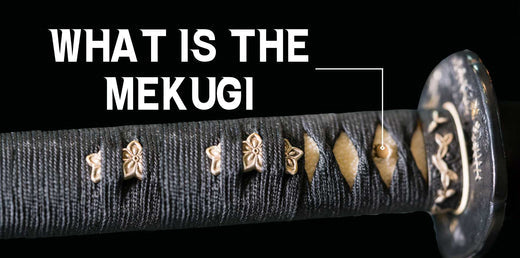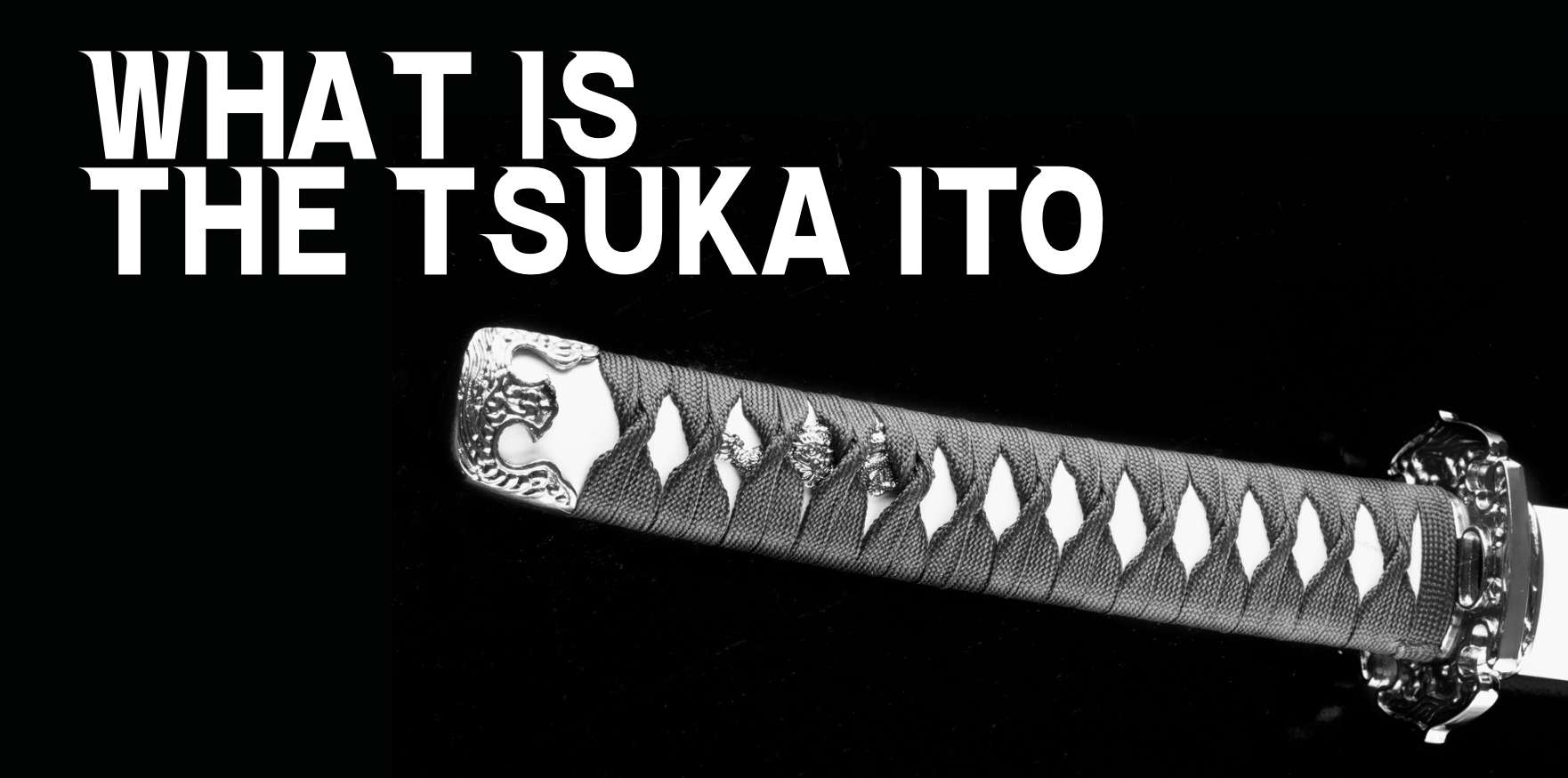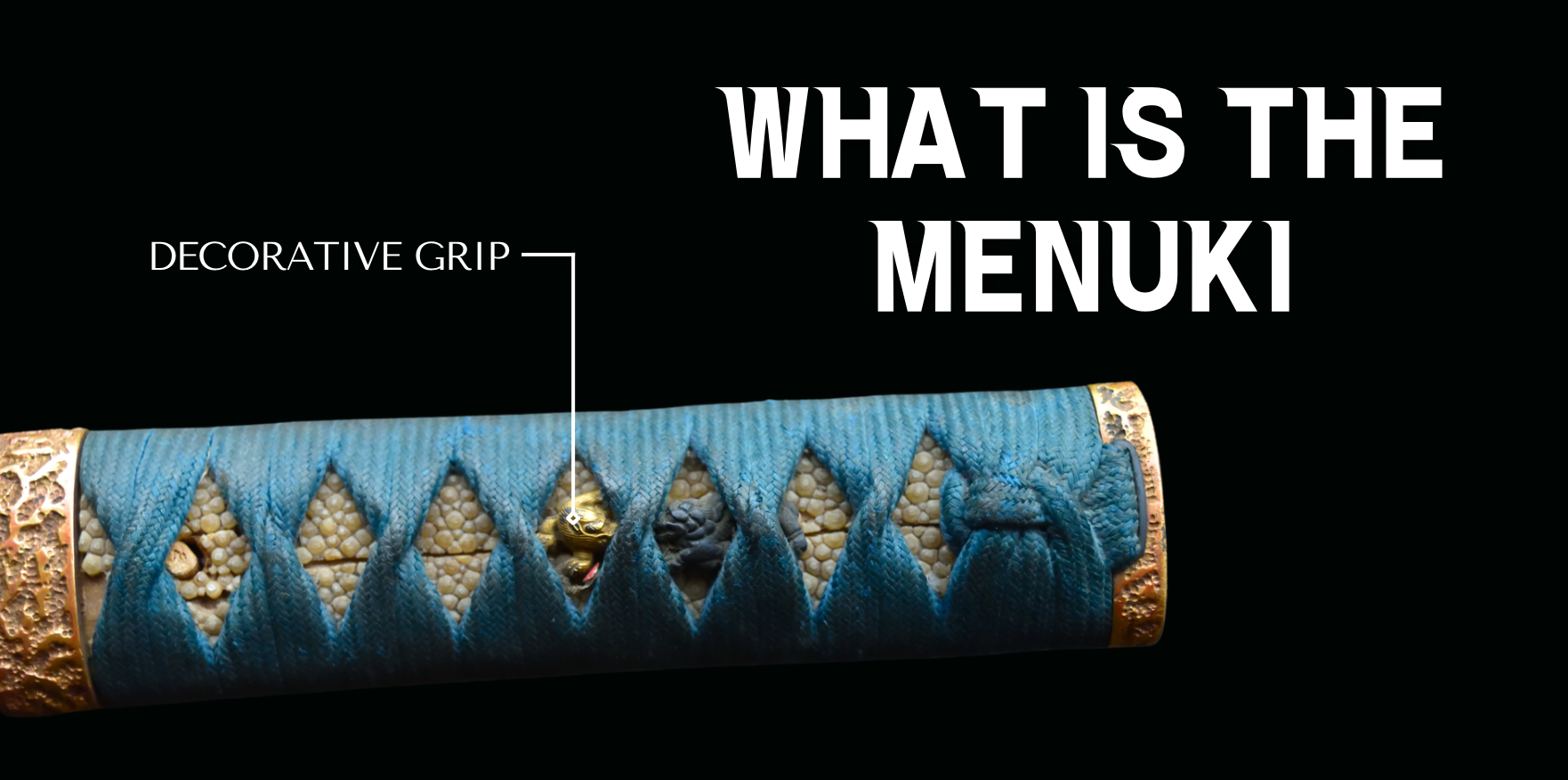What is a mekugi
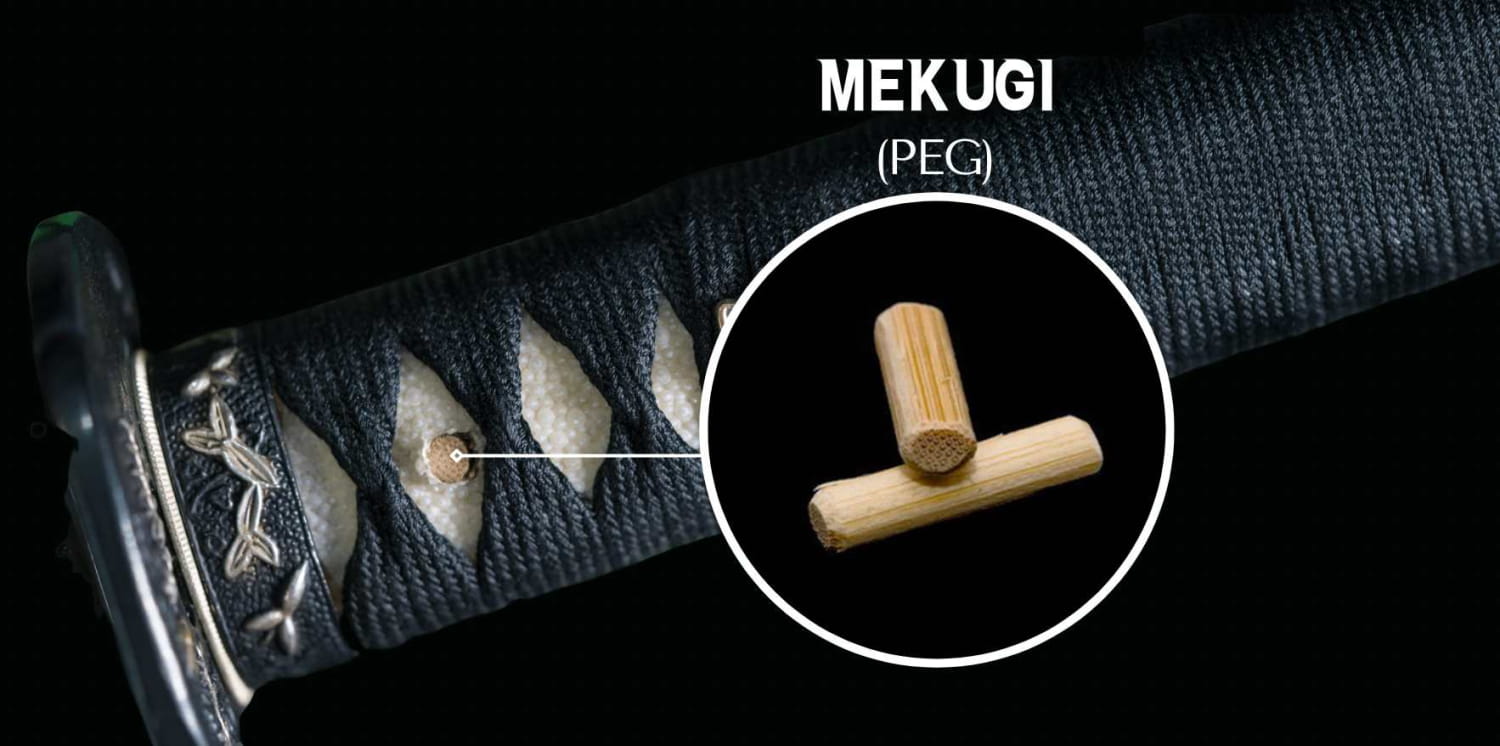
The mekugi is a peg, typically made from bamboo, but it can also be made from brass or other types of wood. It is inserted through a hole, the mekugi-ana, in the sword's tang (nakago) and the hilt (tsuka). The mekugi is responsible for locking the blade and handle of the katana, thereby ensuring the overall stability of the sword.
Despite its small size, the significance of the mekugi within the katana's structure is immense. Absence of the mekugi could lead to the detachment of the blade from the handle, rendering the sword practically inoperative.
Mekugi Materials and Styles
Traditionally, mekugi are made from bamboo due to its strength and flexibility. Bamboo is also a readily available material in Japan, which made it a practical choice. However, other materials such as horn, bone, or metals like brass are also used. The choice of material can sometimes denote the status of the sword's owner or the era in which the sword was crafted.
Most katanas typically have one or two mekugi. The use of two mekugi is more common in swords intended for martial arts training or combat, as it provides extra security. The placement of the mekugi is also thoughtfully done to not interfere with the grip of the sword.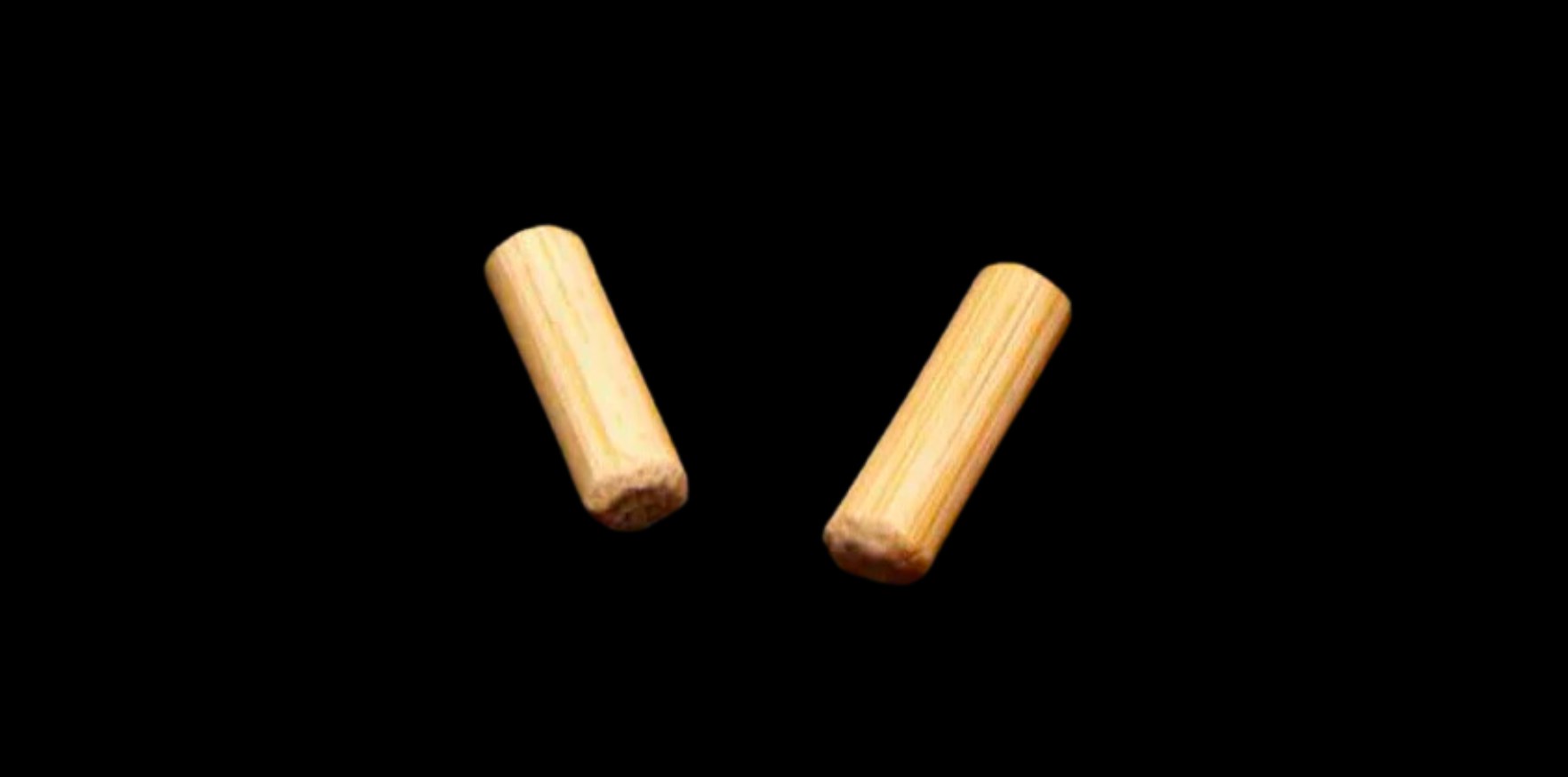
How to remove a mekugi (Nukiuchi)
Nukiuchi is the art of removing and inserting the mekugi, and it is an essential skill for anyone who owns a katana. Removing the mekugi allows for the disassembly and thorough cleaning of the katana. However, it requires a delicate touch. Careless handling could damage the mekugi or the tsuka.
Typically, a special hammer called a mallet is used to gently tap the mekugi out of its hole. Once the katana is cleaned and ready for reassembly, the mekugi is carefully inserted back into the hole, securing the sword once more.
Here's a simplified guide to extracting a mekugi:
- Initiate the removal process by identifying a minute and pointed object such as a needle or toothpick. Delicately introduce this pointed tool into the mekugi hole, and gently jostle it until the mekugi begins to loosen. Upon loosening, it can be withdrawn using your fingers.
- In the event the mekugi appears stuck, consider warming up the vicinity of the mekugi with the help of a lighter. This can sometimes aid in loosening the mekugi. It is vital to exercise caution during this process to prevent prolonged heating which may potentially harm the sword.
- Upon successful removal of the mekugi, a new one can be installed by gently nudging it into the hole using a mekugi hammer. Ensure that the newly inserted mekugi fits snugly into the hole, but refrain from hammering it excessively.
The process of mekugi removal requires a delicate approach to prevent any damage to the sword. Patience and careful maneuvers are the keys to successfully and safely extracting the mekugi.
If you want to learn more about katana parts, check our blog post on menuki, a decorative ornament of the katana handle

To sum-up:
- The mekugi is a peg, usually made from bamboo, that secures the hilt to the blade of a katana.
- The mekugi allows for the katana's unique modular construction, permitting the sword to be disassembled and reassembled for maintenance and repairs.
- The materials used for making mekugi vary and can include bamboo, horn, bone, and brass.
- The art of removing and inserting the mekugi, known as nukiuchi, is a crucial skill for katana owners, allowing for proper cleaning and upkeep of the sword.



